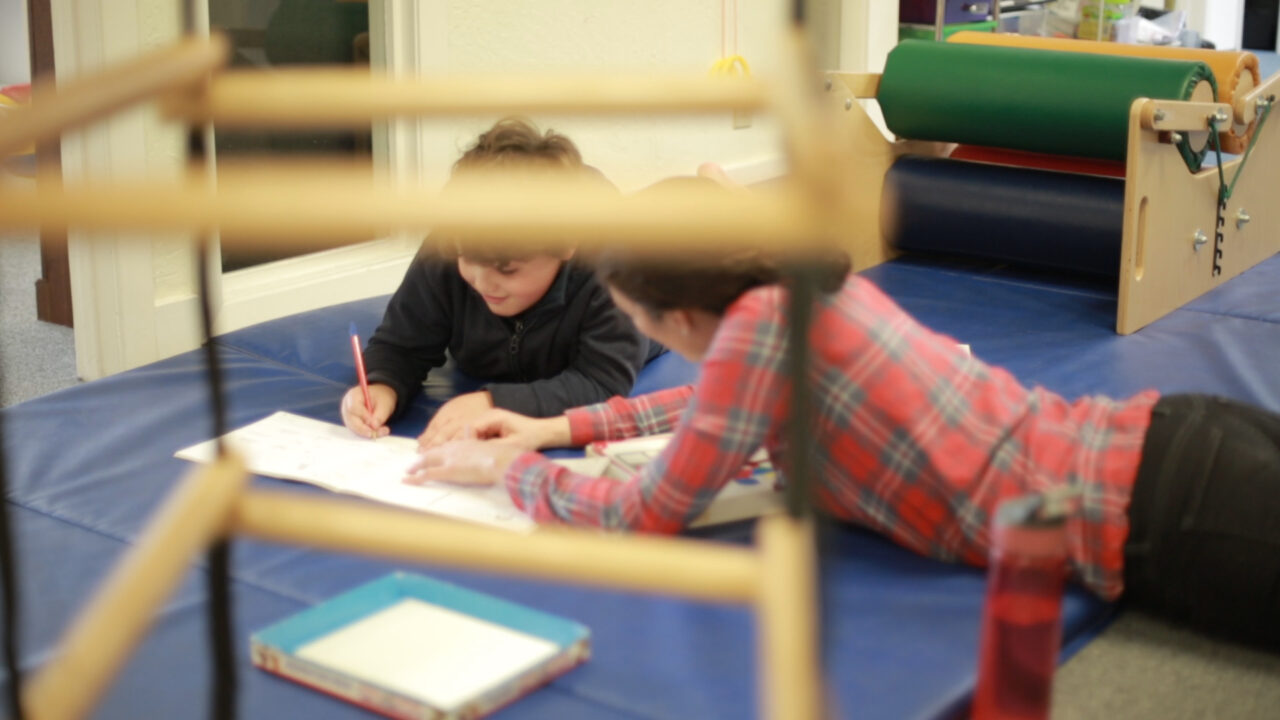Occupational Therapy
Common occupational therapy (OT) interventions include helping children participate fully in their daily lives: at home, in school, and in social situations. OT also helps children recovering from injury/trauma regain skills, and provides support for children experiencing physical and cognitive changes. The majority of the kids we support have sensory differences, and are working on emotional and physical self-regulation and motor skill improvements.
Occupational therapy sessions may include a comprehensive or modified evaluation (depending on actual needs), a visit to the child’s home or school, consultations with parents, teachers, and other service providers, and individual or group therapies.

A Holistic Perspective
Little Hands occupational therapy sessions incorporate play and other intrinsically motivating activities for children, paired with challenging therapeutic tasks aimed at fostering greater capabilities and higher skill levels. Our occupational therapy practitioners focus on adapting all relevant environments to fit each child, including:
- An individualized evaluation, during which the client/family and occupational therapist determine the child’s goals, along with the customized intervention(s) needed to improve the child’s ability to perform daily activities and reach those goals.
- An outcomes evaluation to ensure that goals are being met or if changes need to be made to the intervention plan.
Treatment Sessions
This session explores the roles play occupies within current occupational therapy practice with preschoolers, and emphasizes the importance of play in OT intervention.
Using the highest audio quality recording technology (high-definition sound) and advanced neuro-acoustic techniques, Therapeutic Listening strengthens neurological pathways to improve the ability to learn, communicate, and process information.
This session provides therapists with an enhanced understanding of the developmental and neurological processes of the Vestibular-Auditory-Visual Triad. Understanding how these three systems work together with the body’s senses creates a foundation for achieving competency in applying specific intervention strategies, including Astronaut Training: A Sound Activated Vestibular-Visual Protocol.
The Wilbarger Deep Pressure and Proprioceptive Technique (DPPT) & Oral Tactile Technique (OTT) refers to the specific sensory modulation techniques developed by Patricia Wilbarger, MEd, OTR, FAOTA. Based on the theory of Sensory Integration, the DPPT uses a prescriptive method of providing stimulation to help the mind-brain-body self-organize.
Handwriting Without Tears uses manipulatives to engage students in multisensory learning. This simple and developmentally appropriate instruction makes handwriting fun.
Zones of Regulation is an empowering social-emotional learning curriculum that helps build safe, supportive environments that foster learning and well-being.
For more than a decade, the practical, motivating, and kid-friendly Superflex Curriculum has been a core resource for teaching students about flexibility, self-awareness, social interpretation, metacognition, executive functions, and self-regulation.













